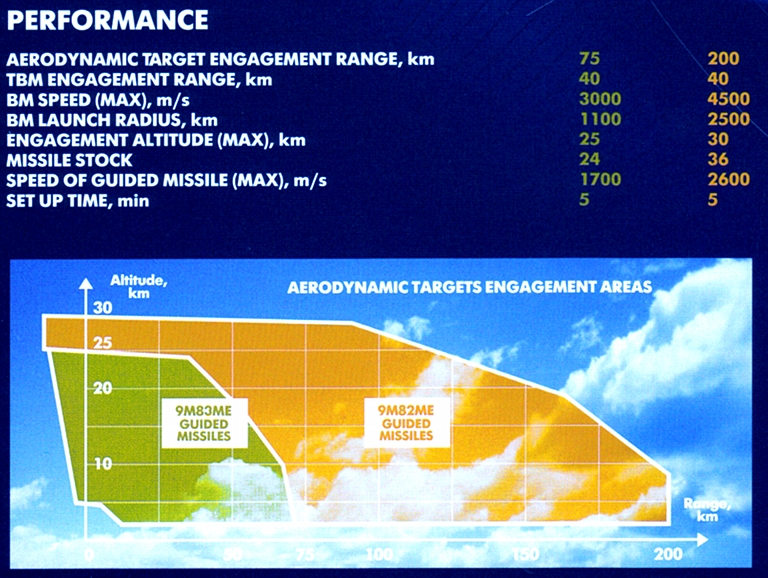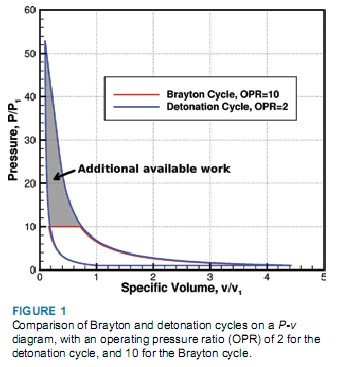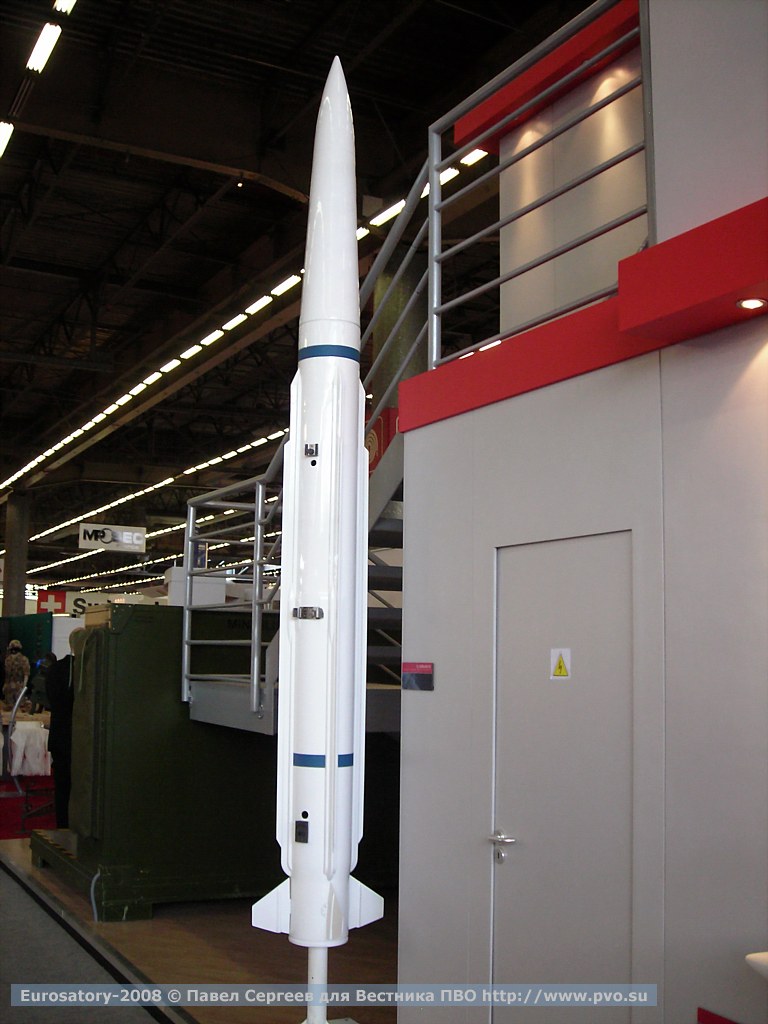SPOILER! Kattints ide a szöveg elolvasásához!Lt Col Michael “Dog” Geczy (USAF)
78th EFS “Bushmasters,” F-16CJ
Operation ALLIED FORCE
MiG-29
4 May 1999
Call-sign: PUMA 11
Lt Col Geczy graduated from Euro-NATO Joint Jet Pilot Training (ENJJPT) at Sheppard AFB in 1983. Upon completing F-4E training in 1984 he flew the Phantom II for two years, converting to the F-16C in 1986 while on his first operational assignment at Ramstein AB, Germany. He later graduated from the USAF Fighter Weapons School F-16 Division in 1992. Lt Col Geczy had approximately 2,300 flight hours (including previous combat experience in Iraq and Bosnia) in the F-16C (Blocks 15, 30, 42, and 50) before deploying to Aviano AB for Operation ALLIED FORCE (OAF). This MiG-29 kill occurred on his 115th career combat mission, and his seventh mission supporting OAF. The following excerpts were taken from a briefing that Lt Col Geczy gave about a year following the event.
We were tasked for what we call a "force protection" mission... loaded up with two High Speed Anti-Radiation Missiles (HARMs), two AIM-120A AMRAAMs, two AIM-9M Sidewinders, a full load of 20mm, and self protection assets (external jamming pod on the centerline, chaff and flares, and towed decoys). As there were no Eagles tasked as part of this daylight strike mission, our job was to protect the strikers from both the surface and air threats.
The jets were Block 50 F-16CJs. F-16CJs are configured with the HARM Targeting System pod on the side of the intake. The HARMs are those large white missiles closest to the external fuel tanks that home in on radar emissions from SAMs, AAA, or early warning radars. The other key part to our force protection mission was air-to-air, of course. On the wingtip missile stations are the AIM-120 AMRAAMs; we also carried the shorter range AIM-9M infrared missiles on the inboard stations, and the trusty internal, 20 mm Gatling gun for shorter range air-to-air engagements.
My flight included myself as number one (on my 12th contingency deployment), my wingman, who was a 1 Lt (“DBAL" Austin, with about 350 hours in the jet) on his third contingency deployment; the number three and element lead (“Hajii” Julazadeh) was an instructor pilot with about 1,200 hours (and on his eighth contingency deployment). The number four man, “Nut” Peterson, was absolutely critical to our success that day. Although “Nut” was flying as a wingman and number four, he was then a four-ship flight lead, and upgrading to instructor pilot with about 800 hours in the F-16. Operation ALLIED FORCE was “Nut’s” second contingency deployment. This combat sortie was the seventh or eighth Operation ALLIED FORCE sortie for all of us, since Shaw AFB deployed our squadron into the theater about three weeks into the war as part of a NATO force structure plus-up.
I have to admit, my opinion is that the Serbian surface-to-air missile (SAM) battery crews were pretty darn good...well trained and coordinated during Operation ALLIED FORCE, and with some pretty creative and unpredictable tactics. They fired over 700 SAMs at NATO aircraft during the war! Of course, the Serbian military had been watching NATO’s operations over Bosnia for more than six years, and had been quick to modify their tactics during this operation to increase the probability of a successful kill against NATO aircraft. So frankly, since the Serbian MiG-29s had not faced NATO pilots for almost seven weeks at this point of the war — and we had just lost our second NATO jet a couple nights prior to a SAM — my biggest concern that day was the SAM operators. I was dead wrong, as the biggest threat that day would end up being one MiG-29 driver who would attempt to intercept “tail-end Charlie" during the egress phase of the strike.
On that day, NATO was conducting some of its first daylight strikes in central Serbia, near Belgrade. There were two flights of four f-16CJs, each dedicated to the force protection of these midday strikes. My flight, call-sign PUMA 11, was tasked to launch out of Aviano, pre-strike refuel, enter Serbia, protect Strike "Alpha,” egress, refuel again, re-enter Serbia again, and then protect Strike "Charlie.” Strike package “Alpha" that day included Dutch, British, and French strikers. Another flight of four F-16CJs (PANTHER 21) were from Spangdahlem AB (but also launched out of Aviano), and were protecting strikes “Bravo” and "Delta” in the same manner.
Keep in mind that, since the F-l5Cs were dedicated to protecting the tankers and AWACS that day, they only had CAPs up in Bosnia and Hungary. The other players that day included EA-6Bs, a French AWACS that controlled all of the activity in Bosnia, and a British AWACS that controlled the strikes in Serbia.
Let's get on to the details of that day. First of all, the weather was poor. The clouds were layered to broken up to almost 30,000 feet. Our flight had some difficulty finding good, clear airspace to CAP to do the best job protecting against the air and surface threats during the strike period. In fact, the British and Dutch strikers ended up weather aborting their attacks completely. On the other hand, the French strikers, or KNIFE 61, were working overtime trying to deliver their bombs between holes in the weather in their target area.
Near the end of the strike period, KNIFE 61's flight lead requested that we stay on station another eight minutes or so until they finished their attacks. I agreed, but of course, was concerned that we might end up stretching the flight's fuel before we could get back to the tanker. Since my fuel state was actually the lowest in the flight, I made a mental planning note that I was the most “skosh” on gas.
Later, I heard the next set of F-16CJs for Strike Bravo, PANTHER 21, check in on the strike frequency. Well, the French finished their attacks after about 12 minutes of "overtime," and we started to escort them out of Serbia. Keep in mind, it had been a very quiet mission up to this point. Although we had done some preemptive SAM targeting, we had not fired any HARMs at active sites during this first strike period. I was probably a bit too casual finishing up this "walk in the park" strike package, and too anxious to get air refueled and back on station for the next one.
It is near the end of this “ho-hum” egress that the AWACS controller calls out that a "bogey" is airborne in Serbia. I completely missed this call! Fortunately, our trusty number four man, "Nut," saved the day, and piped up on our discrete, intra-flight frequency with a "head's up" call and the bogey's position. We immediately turned the four F-16s around, and we faced the bogey in a wall formation. During our turn to face down track, NATO AWACS called out the track as hostile for the first of what would be a total of seven times during the intercept.
We simultaneously pushed it up to supersonic, climbed up into the high 30s (forgot to jettison our tanks!), and pressed right on into the SAM threat rings. Shortly thereafter, “DBAL" called out that he was bingo fuel...since I knew that I actually had the lowest fuel in the flight, I "copied" his call, and decided that all of us would most likely need to recover into Sarajevo after the engagement.
About this same time, the AWACS controller made some calls that made the NATO-required beyond-visual-range (BVR) rules of engagement (ROE) matrix damned confusing, and uncertain in my mind. As I was working through this dilemma, both in my head and with some calls back to AWACS, I tried to get PANTHER 21 flight’s radars looking for the target (who were actually trailing us by quite a bit). I frankly started to have my doubts that we were going to finish this intercept with the little fuel remaining. Also during this final period of the intercept, the MiG-29 driver illuminated me with his radar a couple times, which definitely got my attention.
Fortunately, yet uncomfortably late in the intercept, and at range much less than we all wanted. I finally worked through all the ROE rules with AWACS... I got a chance to put my thumb on the weapons release, or pickle button—one of my last thoughts as I was mashing down on the pickle button was, “if it’s important enough to shoot, shoot two. So, ‘Dog,’ fire these two off as rapidly as possible!"
Well, it seemed to take FOREVER for that first missile to come off—must have been time compression! I actually had second thoughts about whether I had properly armed-up or not. I just started to glance in the HUD to confirm the arm status, and then I saw the first missile come off from the left wingtip. I mashed the second AMRAAM off as quickly as I could after that first one launched. It didn't seem to take nearly as long for the second AMRAAM to blast off the right wingtip!
Although I had already fired an AIM-9 in training and HARMs in Bosnia during Operation DELIBERATE FORCE, and earlier in Operation ALLIED FORCE, I had not YET had a firsthand appreciation for what an AMRAAM live-fire looked like. Those two AMRAAM launches were EXTREMELY impressive, and continue to amaze me even today!
Since the MiG was at short range and maneuvering at this point, the line-of-sight of the target was changing rapidly across my nose and well below me—those missile fins obviously dug-in immediately after launch and dove with rapid, arcing attacks through the HUD field-of-view with breakneck speed (kind of like a pitcher throwing a curve ball)! It was a true testament to American technology that the AMRAAM performed so well at close range, and with a fantastically high line-of-sight! I am not sure any other radar missile out there could have hacked the square-corner that the AMRAAMs made that day!
Descending quite a bit after the launches, I noted on my radar that the missiles were preparing to impact, and made a mental note that in order to get credit for the kill, “I had better see this, as I may be the only one who witnesses it!” I rolled up in about 90 degrees of left bank, and then saw the aircraft exploding about six thousand feet below, and between scattered cloud layers (basically underneath my left knee). I made two, “Splash one with a fireball!” radio calls to AWACS—guess I knew that my chances of making that call again in my flying career were essentially nil!
“DBAL,” on the other hand, reported after the mission that he watched both missiles all the way into impact. Fortunately, the weather had scattered out somewhat at the point of intercept, so today "DBAL" has a "nanosecond by nanosecond" recollection of how the aircraft defensively maneuvered to a near perfect beam, the missiles' impacts, how the MiG started to burn, and what parts came off first!
Following the engagement, as we were all “skosh" on fuel, we immediately started our climb and egress to the west, towards the tanker tracks in Bosnia. I requested that the AWACS controller sector our tanker due east and directly back to us.
Now the real difficult part of the mission began! As it turned out, and as was frequently true during Operation ALLIED FORCE, the hairiest part of the mission was just beginning: getting rejoined on a tanker that has been directed to retrograde to a safer area, in the weather, while other F-16 and F-15 flights are rejoining on it simultaneously to do their refueling, in the weather. When we crossed into Bosnia, we discovered that our tanker was over 120 miles away and going further away!
I then set a divert bingo for the flight for Sarajevo, and had to call the tanker crew directly to get them to turn around for an in-the-weather tanker rejoin. In the end, we were able to refuel and get back on station for Strike Charlie. Shortly thereafter Strike Charlie was weather cancelled. With a full load of fuel, we flew back to Aviano “as the crow flies” — supersonic in the low 40s across the whole length of Bosnia, and across the Adriatic Sea — breaking all kinds of rules, I am sure!
It was raining like cats and dogs when we finally got back to Aviano; of course, I insisted upon bringing the four-ship up a combat, tactical initial after the mission (pretty dumb decision, as the rain storm was almost directly over the air base) — the guys did a marvelous job getting the jets on the deck, despite my stupid act!
We all lined up in the de-arm area, and a crew chief hooked up on the head-set communications cord during the aircraft de-arming. Since my HARMs were still loaded. I guess he thought that we had a “ho-hum" mission; he asked me in a real low key
voice, and obviously not really pleased to be in the pouring rain.
“Well, Sir, how did your mission go?"
I replied, “Pretty good...Shot a MiG down."
He yelled back, “You got to be sh!ting me...Sir!”
I yelled back at him, “Look at the missile rails!!!”
I looked at the rails too, at that point, and saw the other guys in the de-arm crew doing pull-ups on the missile rails in the rain! They were really psyched up, and came up later after shutdown to give me the AMRAAM umbilical cables that remained—perfect mementos for that mission!
“Nut” showed exemplary flight discipline that day. First, by succinctly and promptly advising the flight about the AWACS call that a “bogey” was approaching during our egress. And second, by employing his radar as directed to confirm that no other threats were airborne. Also, unlike other “yahoo-cowboy radio calls" that you hear sometimes during MiG kills these days, my flight members did not say ONE word after the MiG-29 was splashed. They maintained the strictest discipline throughout the egress, on to the next AWACS controller in Bosnia, to the tanker, and on the boom taking fuel. Only after the air refueling was complete, and when we were preparing to return for the next strike period, did “Nut” say on the discrete frequency
“PUMA 1, PUMA 4. request?”
“Go ahead with your request, PUMA 4”
“Sir, can we go back there and do that again?”
By the way, last month "Nut" Peterson was selected to go to F-16 Fighter Weapons School for the class starting this summer.
There were some internet claims immediately after the war that this MiG-29 was mistakenly shot down by a Serbian SAM battery. That is absolute, complete, and pure BS! You can actually see the aircraft break up on my radar tape after the missile’s impact!
I cannot speculate upon the Serbian Air Force single ship tactics that day, or why someone would make such a claim, other than to perhaps save face for the Serbian MiG-29s that performed so poorly during the war against NATO pilots (for lots of reasons, I am sure: weak equipment, poor aircraft serviceability, lousy Soviet-style training and flying currency, etc). Lately, more and more of the Serbian internet sites acknowledge that this MiG-29 was downed by an F-16CJ.
But what I can say is that the four of us that day were employing fully mission capable F-16CJs with 100% of our jets and avionics operational (thanks to our maintenance technicians), fully armed with a variety of operational weapons ready to handle all kinds of threats (thanks to our munitions, armament, and weapons technicians), and were fully trained to handle the events of that day (thanks to the USAF training and readiness model).
You bet, there are decisions and tactics that I would do differently if I had a chance to do that mission again. But any of my flight members could have ended up firing those two AMRAAMs and getting a MiG-29 kill that day. I was fortunate to have been the leader and targeted the group, and thankfully supported by a great flight of Viper drivers, particularly “Nut” Peterson, who really got the “light bulb turned on” during our egress.
Although Lt Col Geczy deployed to Operation ALLIED FORCE as part of the 78th Fighter Squadron, the deployment included jets from other squadrons at Shaw AFB. The aircraft during Lt Col Geczy’s MiG-29 engagement (91-0353) was actually from the 77th FS “Gamblers.” Lt Col Geczy went on to command the 77th Fighter Squadron, and made F-16 91-0353 the squadron flagship during his two year command.
 Informatika és tudomány
Informatika és tudomány
 Informatika és tudomány
Informatika és tudomány








































